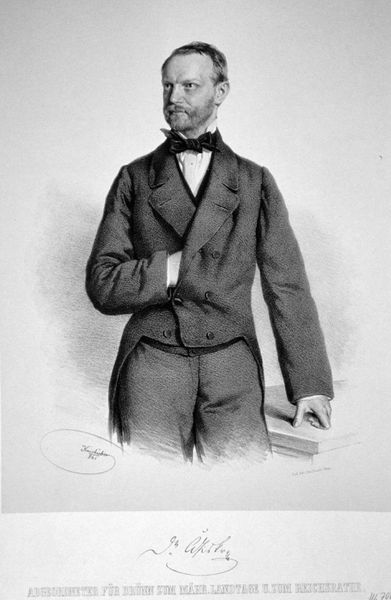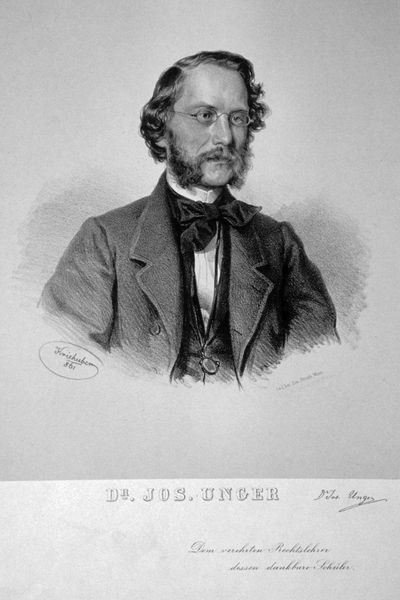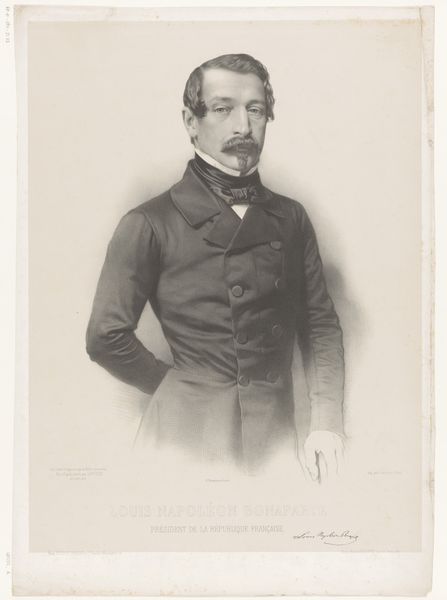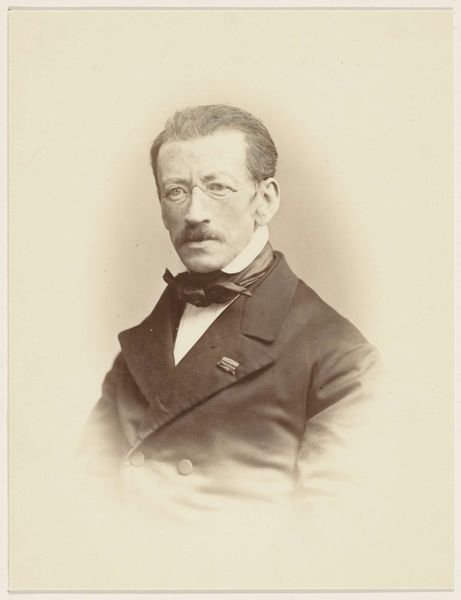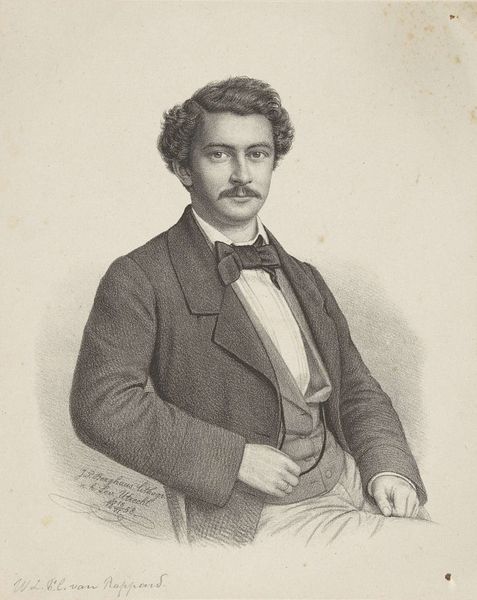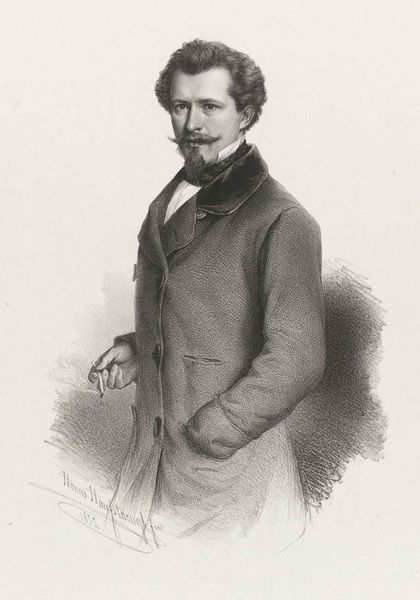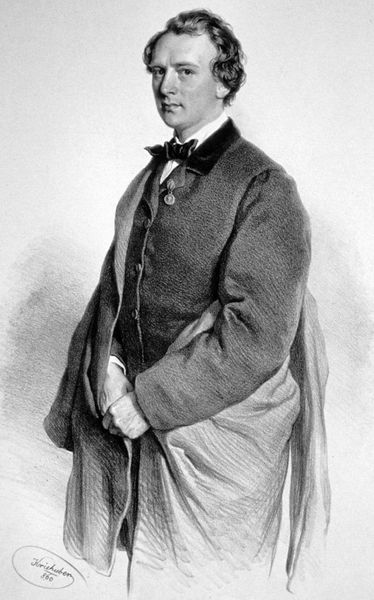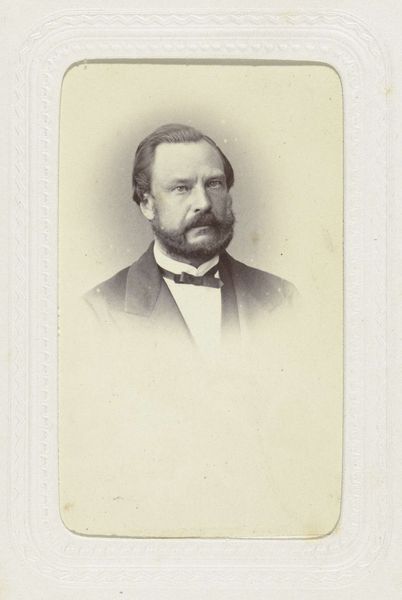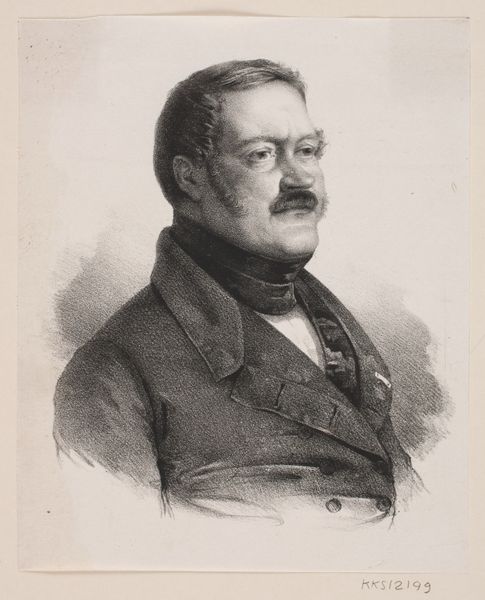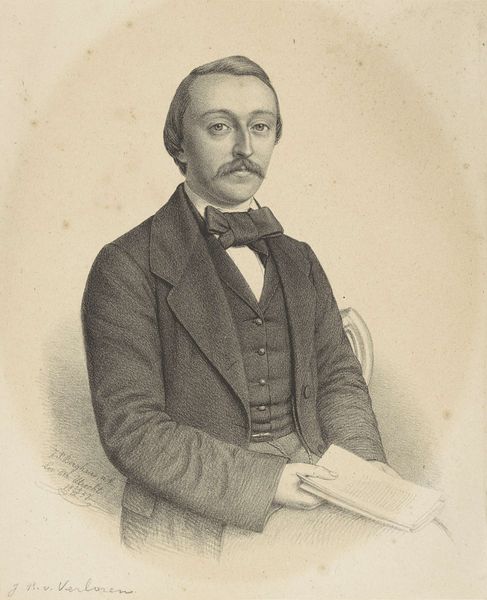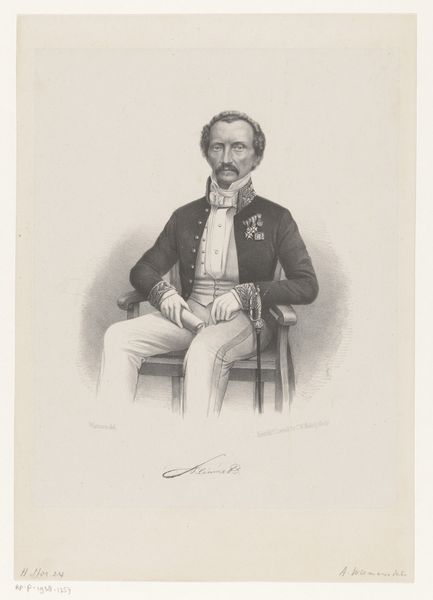
Copyright: Public domain
Curator: Looking at this, the initial impression is quite severe, almost stoic. Editor: Indeed. The piece before us is a charcoal drawing executed in 1860 by Josef Kriehuber. It depicts Max Von Gomperz, an Austrian industrialist and banker. These portrait drawings were quite popular, weren't they, demonstrating status? Curator: Absolutely. It served a critical function within the bourgeoisie for articulating their social standing. But I am especially drawn to the tension within the figure. There's an incredible display of wealth and accomplishment evident through the carefully tailored suit, bow tie, and the pin—yet he is rendered in charcoal with precise hatching. Editor: Kriehuber's skillful employment of charcoal in this portrait creates a stunning study of texture and light. Notice how he captures the sheen on Gomperz’s jacket lapels, using contrasting light and dark tones. Curator: What's interesting too is how Gomperz's gaze is directed slightly off center. I immediately wonder about the psychology and the conditions surrounding a man positioned at the intersection of rapid industrial expansion, liberalism, and imperial control. Editor: Those economic and political factors heavily shaped art production at the time. Consider the market forces driving demand for portraiture, particularly within industrialist circles—like Gomperz. The rise of the middle class helped to popularize art in unprecedented ways. Curator: To contextualize Gomperz's identity further, it is crucial to mention his Jewish heritage, given that Austria witnessed increasing antisemitism during this era, something that impacted the Gomperz family significantly. The historical record demonstrates their prominent contributions to society amidst these pressures. Editor: I agree. I think understanding these layers of political and economic forces, together with the biography of Gomperz, greatly informs our viewing of this artwork, as we interpret it through different lenses. Curator: Absolutely. It provokes complex emotions by prompting these dialogues of personhood, positionality, and purpose, then, and, dare I say it, even now. Editor: I concur. Approaching art history while staying alert to present-day forces creates more enriching encounters. Thank you for this.
Comments
No comments
Be the first to comment and join the conversation on the ultimate creative platform.
